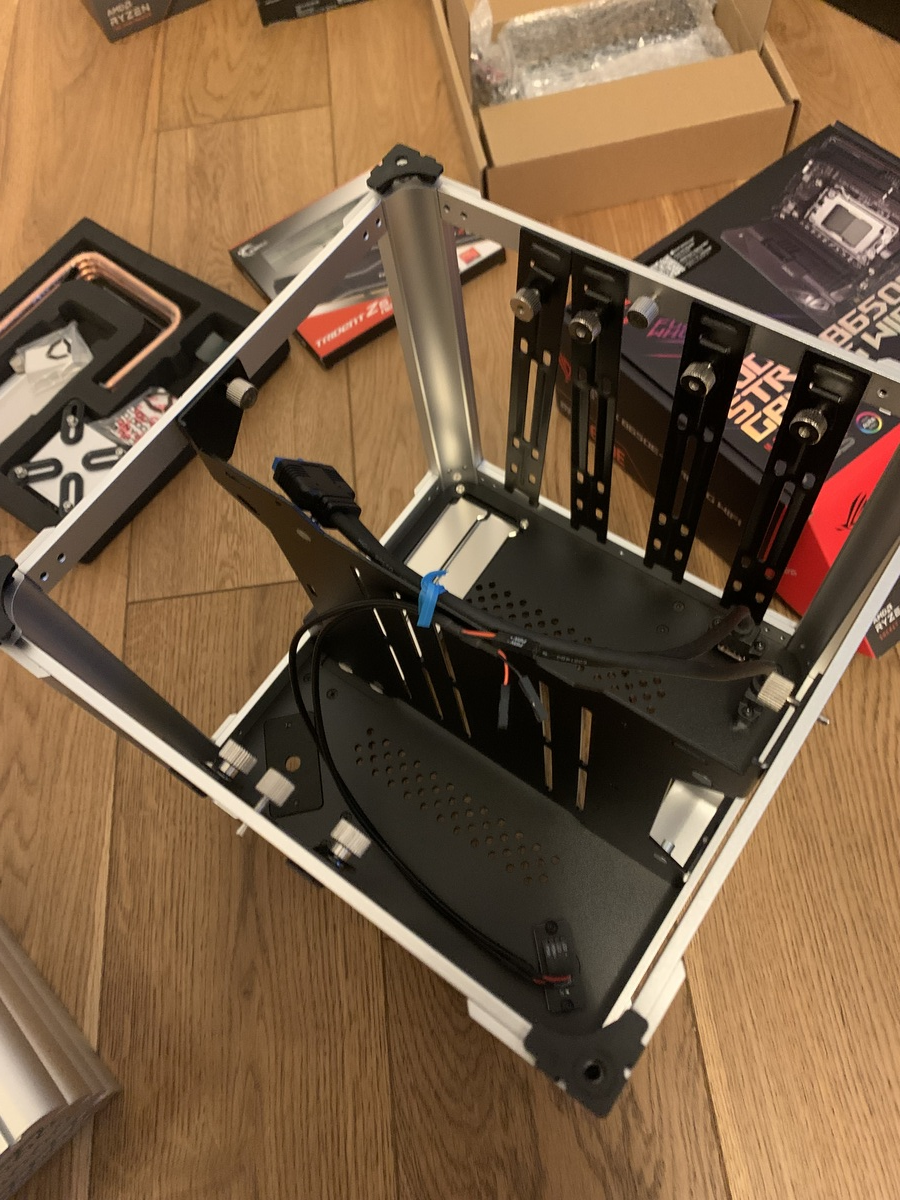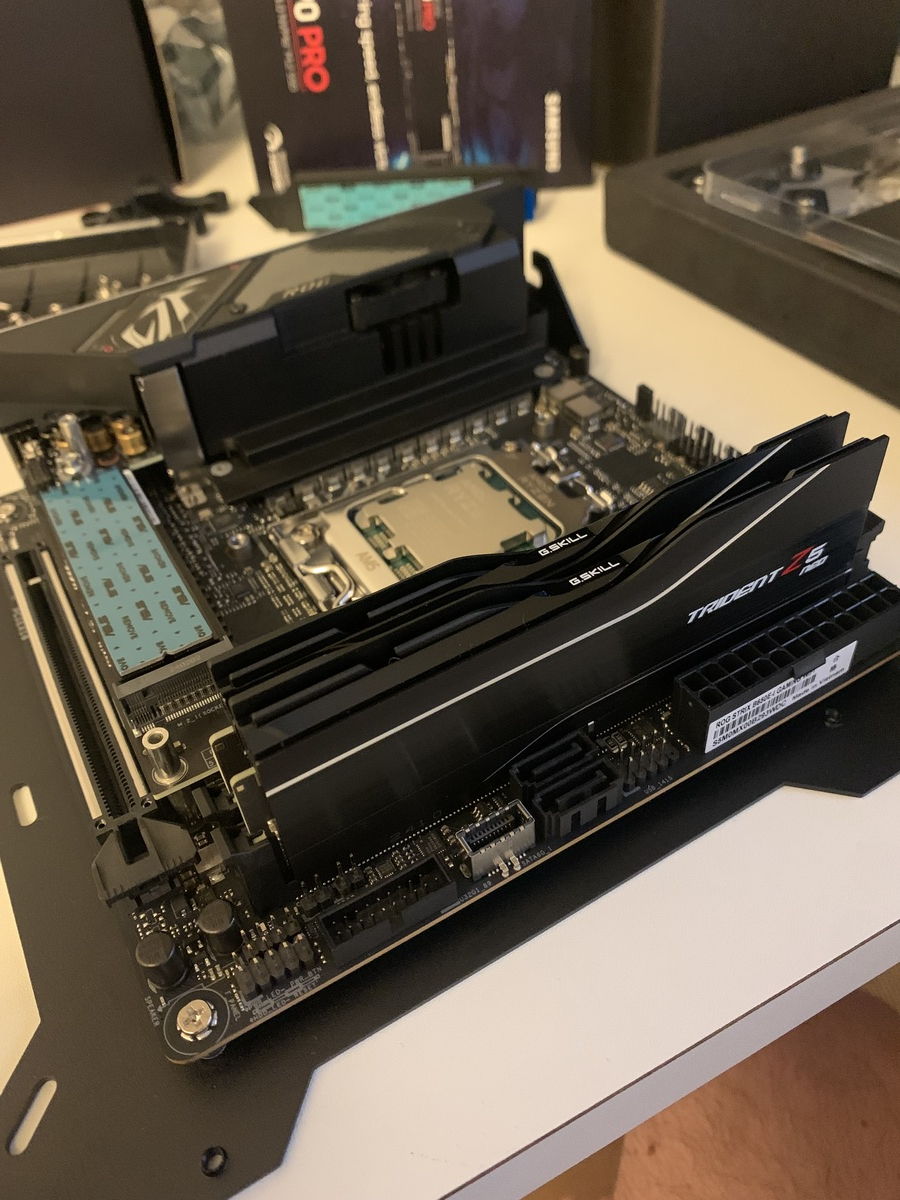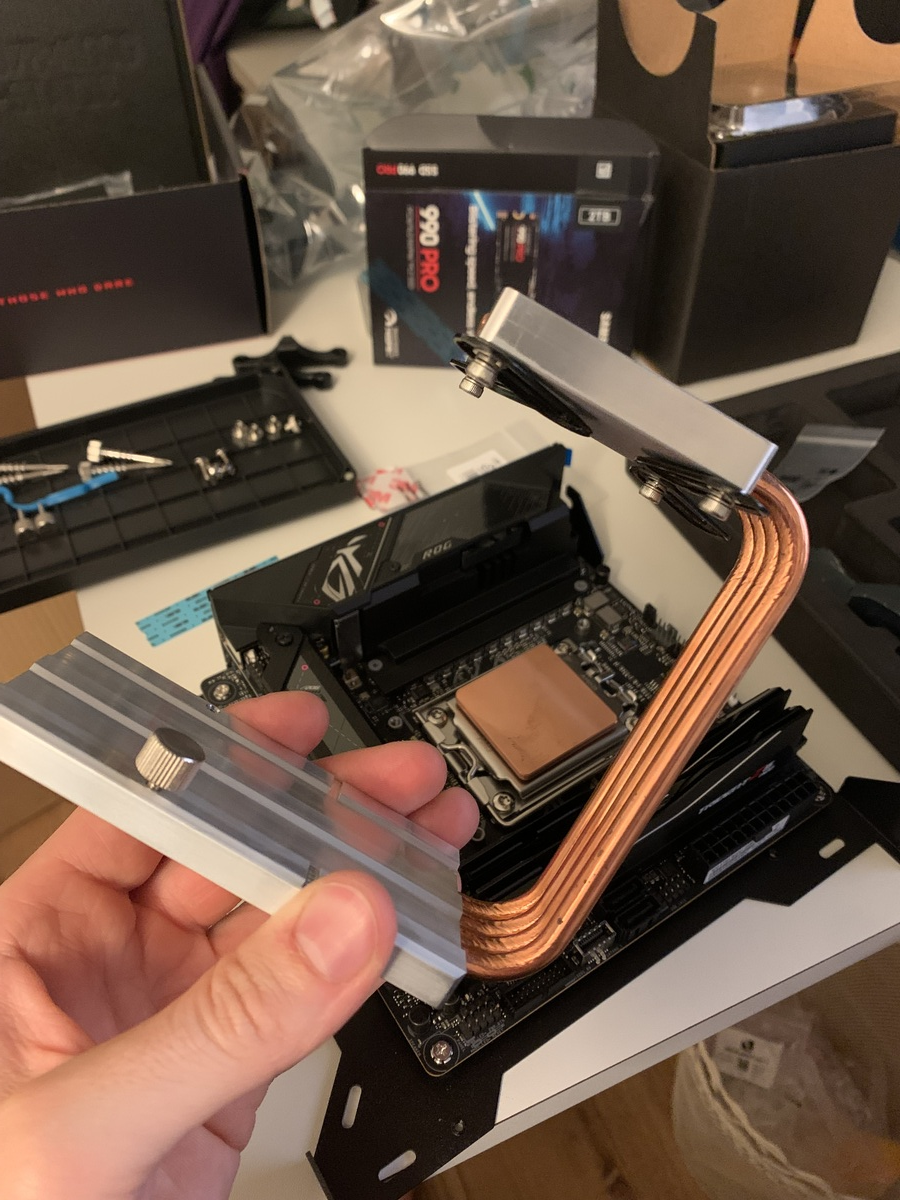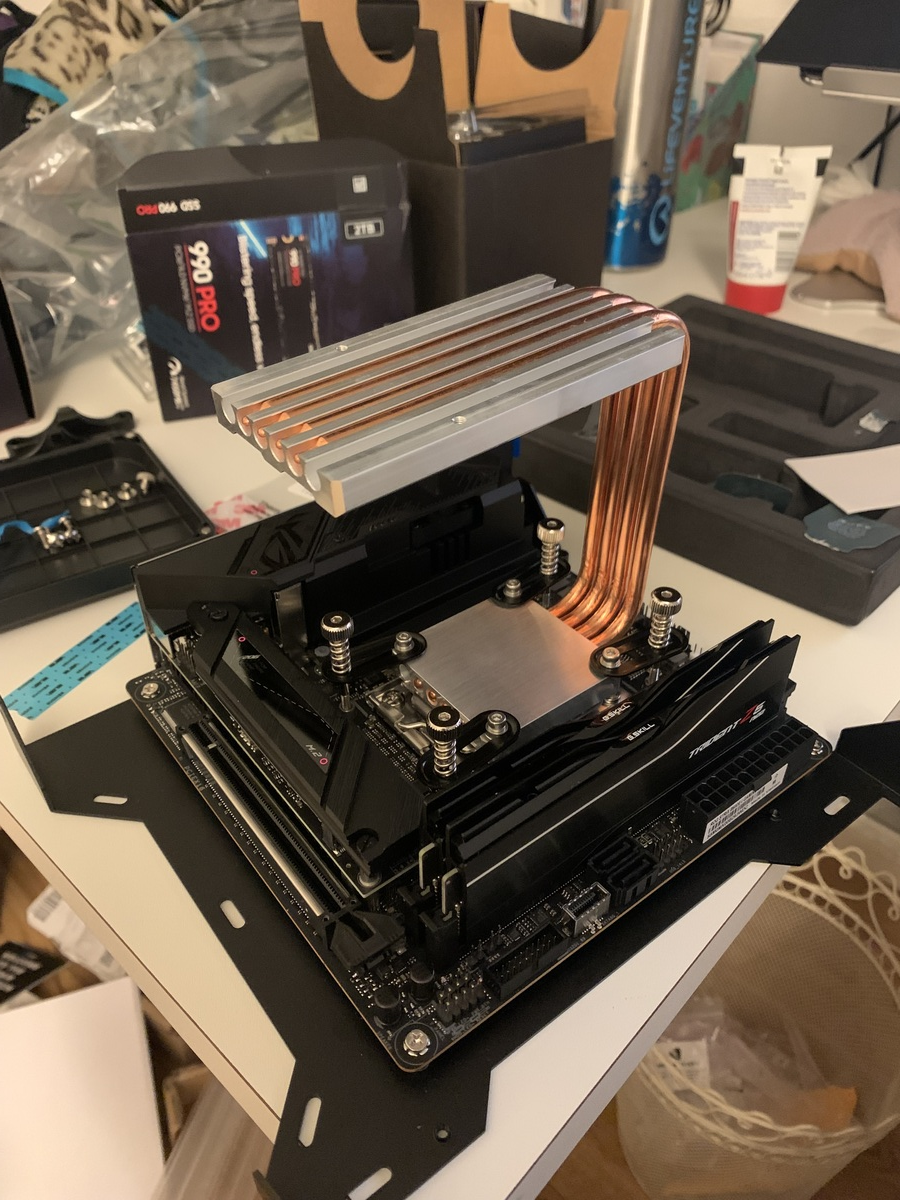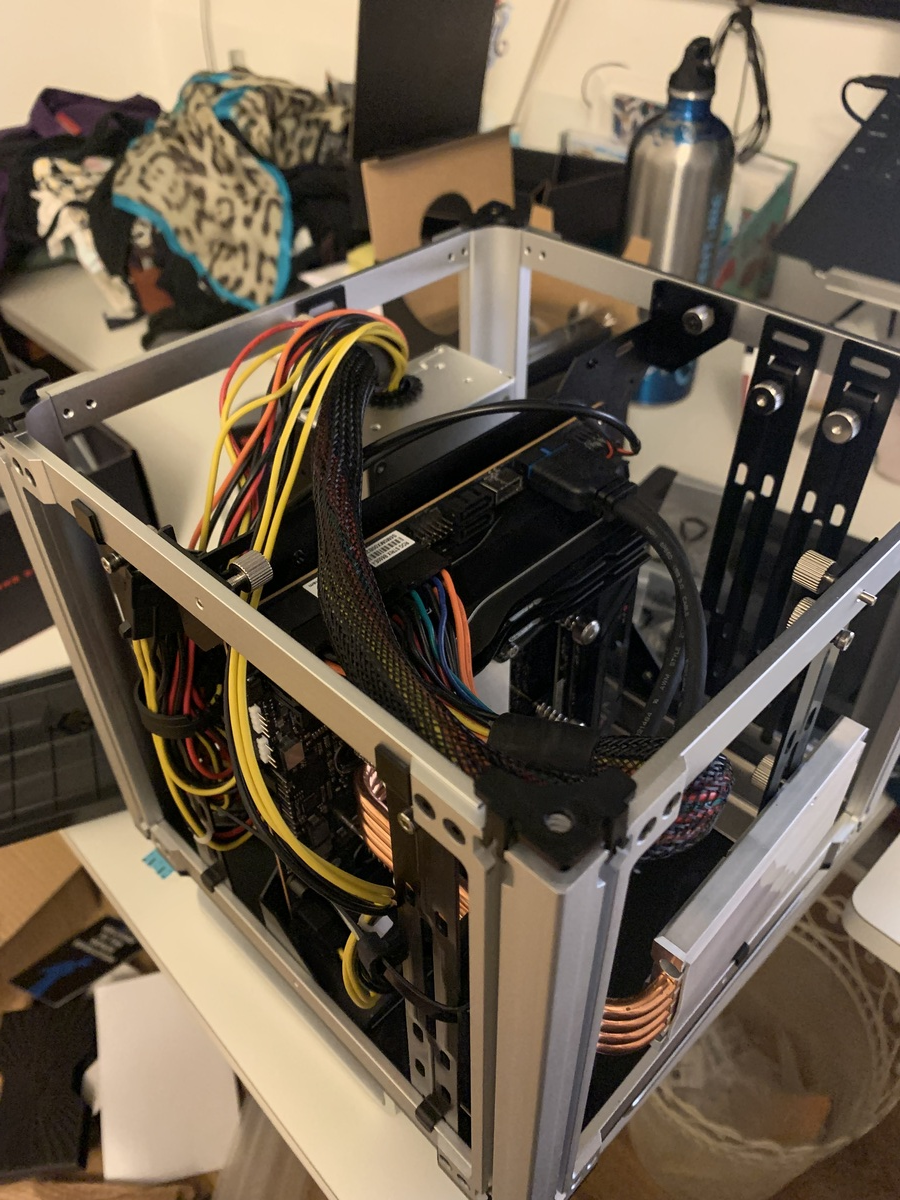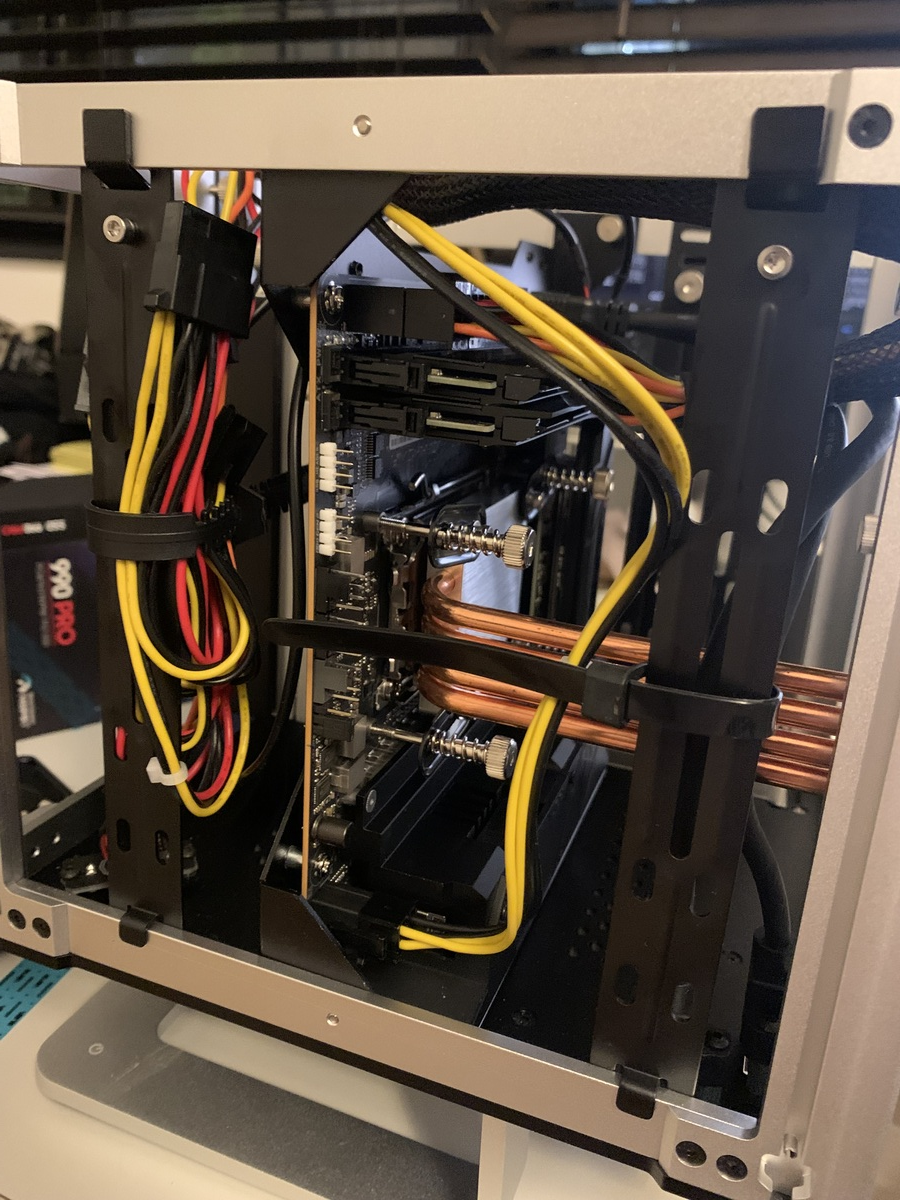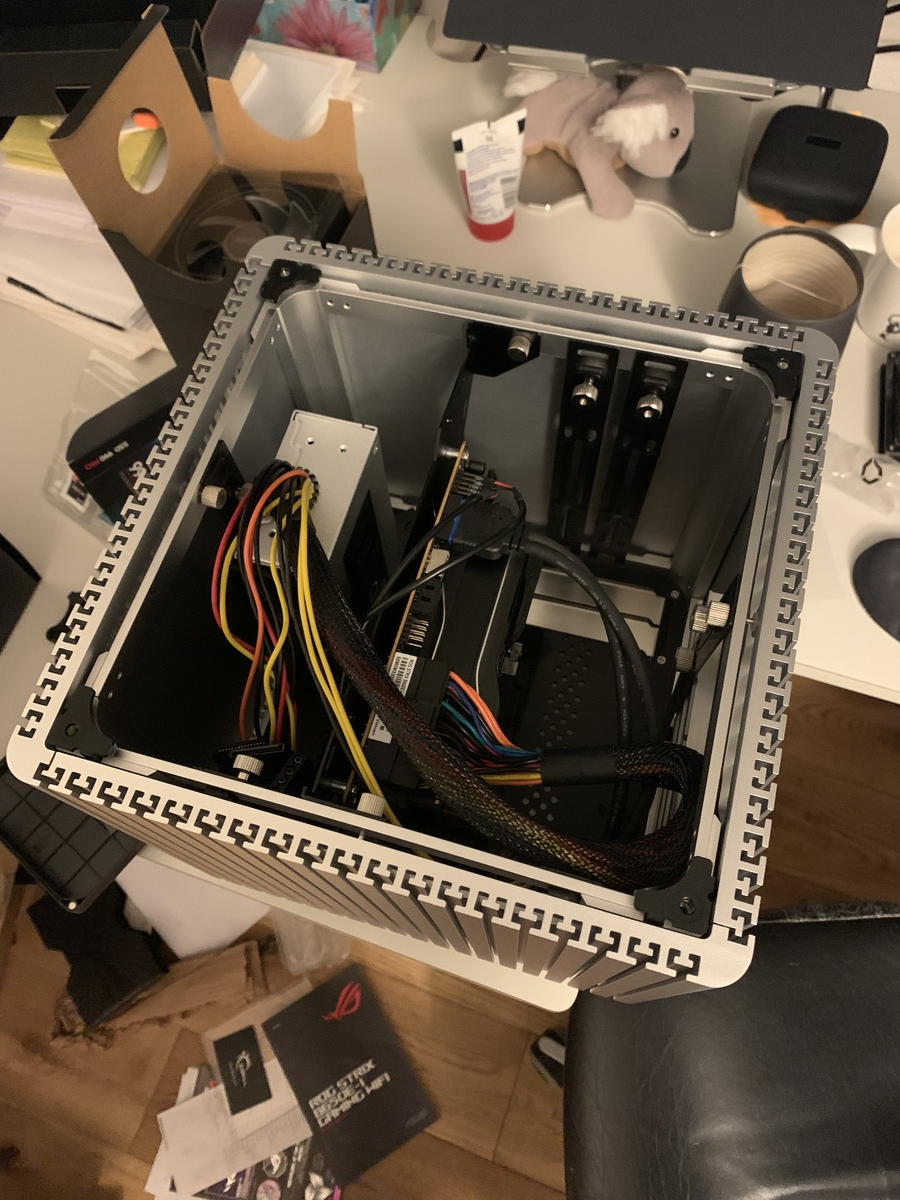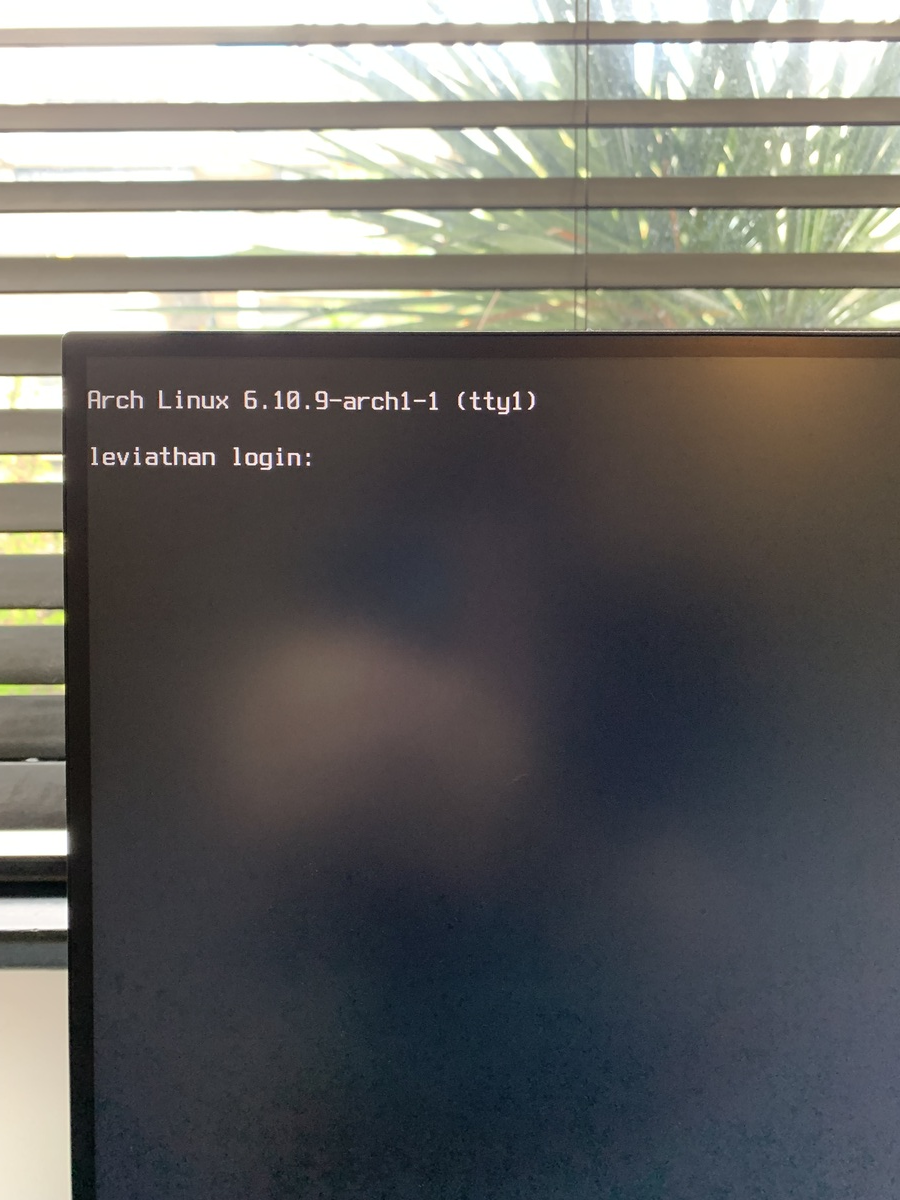Leviathan (or computing in 2024 and beyond)

I had been thinking fantasising for a while of building myself a desktop computer. Not because I need it for gaming or anything particularly computationally heavy, but partly because it was just that, fantasising, and partly for some pragmatic reasons around owning my own machine (my laptop is technically a company laptop) and controlling the build myself.
In August, whilst in France, I bit the bullet and ordered all the parts. This was the first time since I was ten years old that I would build a machine myself, so I was both nostalgic and a bit nervous. Thankfully, PCPartPicker is an excellent tool for helping to understand the myriad options available to the PC builder today. You can find the build here.
Choosing hardware
I had read Joshua Stein’s blog post on his fanless desktop build a couple of years ago and saved it at the time because of the aesthetic appeal of the fanless DB-4 case. This is what I based my build around.
Once the case was chosen, which significantly closed down the option space (I was now limited by the thermal output of the processor to 65W and the form of the motherboard to Mini-ITX), the other big choice was processor architecture.
I have always used Intel processors on the various laptops I’ve owned (from Macbook Pros to System76 to Dell XPS) and, while I would not consider myself an expert, I found two things irritating: the first was what felt like excess hoop-jumping needed on Linux to get various Intel things to work (don’t get me started on the webcam on my XPS), and the second was power efficiency. I had read good things about Ryzen on the performance-power relationship and that was enough to tip me towards trying it out.
Choosing a motherboard was a bit mysterious, but my choices were limited by the Mini-ITX form and choice of processor, but even so there were several options, with quite a wide price-range and differing reviews. After umm-ing and ah-ing for a few days I settled on a motherboard from Asus1.
Here’s the full part list:
- Case
- Processor
-
AMD Ryzen 9 7900
- Motherboard
-
Asus ROG STRIX B650E-I
- RAM
-
G.Skill Trident Z5 Neo (2×32GB)
- Storage
-
Samsung 990 Pro (2×2TB)
- PSU
-
Streamcom ZF240PSU
Building it
The build itself was mostly straightforward, although it took me a long time as it had been over two decades 🤯 since I had last built a computer like this. Each stage took a lot of consideration, like any activity which feels new, and for which you do not know the shape of the outcome. In a way, it’s a bit like cooking a new dish.
Having said that, there were some things I struggled with:
- Working out how to connect up the power supply was strangely difficult. The PSU itself had so many cables, many of which I was not going to be using as they were for things like hard-disc drives and other off-motherboard peripherals. Even so, there were 2.5 sets of cables I really did have to use (yes, 2.5 because one of them sort of split out at the end, seemingly for no reason), and the smaller of these had far fewer pins than the socket into which it plugged on the motherboard. This required a lot of searching for the answer as to why it had far fewer pins and if it was ok to plug in. In the end, basic internet searching was quite unhelpful, but perplexity really saved me with its method of searching and summarising answers, along with the links to the source material.
- The first time around, even after modifying the TDP limit in the BIOS, I still had overheating, but it turns out that there just was not enough thermal paste supplied with the case from Streamcom. The Streamcom support staff were very helpful, however, and I ordered some Noctua paste which did a great job.
- Fitting it all in the box was a bit challenging. The case has nice rails to which I attached the heat disperser and the PSU, but squeezing the wiring in was a bit of a challenge, as was getting things in the right place. I don’t think this is a problem with the case design, it’s just part of the problem.
- Aligning the heat pipes. Getting the heat pipes into place resulted in the case applying some pressure to the CPU die, which made me really nervous – I felt like I was forcing things together but saw no other way to get it all to fit (and it had been designed this way). In the end it was fine, but there was a lot of adjustment and fiddling (and some crossing of fingers) to get it to work.
Peripherals
Almost all the peripherals have been inherited from my previous setup. The only difference is that now they are plugged into a permanent desktop (and the cabling is neater) whereas before they were plugged into my laptop dock which sat next to my primary display.
- Monitor
-
Dell U2719D (2560×1440)
I have always really liked the Dell UltraSharp monitors. I spend a lot of my time in a terminal, so what I really want is crisply-rendered text with no flickering. Beyond that, the USB ports are a nice addition, but I do not have any other special requirements.
- Keyboard
-
This was the first mechanical keyboard I built back in 2020. It’s a split design, which I prefer as it means my hands just sit at shoulder width. The firmware is QMK so totally customisable, and I have six layers defined for letters, symbols, numbers, motions, media, and function keys. It took me a long time to get used to, and it’s probably unusable by anyone else, but I have become extremely used to the convenience of very rarely having to move my hands. This has very clicky keys, so when I built a Rev. 5 for the office I used Zilent switches otherwise I think my team would want to kill me.
- Mouse
-
Logitech MX Master 2S
There’s not much to say about this. It has the buttons I need, it moves the cursor when I need it to. It can be used either with Bluetooth or Logitech’s own RF receiver. I use the latter as I found the connection to be faster and more reliable (and I don’t need to connect the mouse to multiple devices).
- Webcam
-
Anker PowerConf c200
I wanted a webcam for which I could reduce the field of view such that all it could see was my head and not the rest of the room. I also wanted one with a built in microphone (although the mic in this one somehow got damaged so that point is somewhat moot). This webcam is fine, the microphone was not great, but the picture quality is decent and it has a physical lens cover which is quite nice to have.
Reflection
I am very happy with this build, and I have enjoyed having a desktop computer again, especially one without any fans to make noise (although, as it turns out, there is a fan on the motherboard which is part of the power block, sometimes it makes a little sound). There have been some interesting issues, however.
- Finding out how to limit the thermal output of the CPU: I bought a CPU with TDP listed as 65W, but it turns out that this is just the “normal” TDP, but in practice it gets much higher. On one of my first uses the machine overheated and died. Finding the right setting was quite painful, but it turns out it is called “eco mode” in the ASUS configuration.
-
Voltage issues / GPU crashing: in October and November the machine started crashing with a lot of
amdgpu resetmessages in the journal. This was very perplexing, but became increasingly frequent up to the point that I could no-longer use the machine for more than about five minutes. As it turns out, AMD units get undervolted by default, I’m not sure exactly why this is, but I had to modify the performance optimiser (“GFX Curve Optimizer”) to change the voltage delivered to the GPU. After some trial-and-error, and some very helpful members of the archlinux forum, I worked it out.
My final thought it that I have not really settled on what noun to use for this computer. This is a bit of a weird detail, but I oscillate between “computer” (I guess it computes things, but I don’t love it. Also, computers were once people); “machine” (I like this, but it’s very broad, and people don’t always know what I mean); “PC” (yeah but I don’t use Windows, sheesh); and “desktop” (whether it’s a desktop or a laptop is sort of immaterial – a useful distinction for me to think about which one I want to use for something, but I give them names anyway). I will probably just use “machine” and continue romanticising it.
-
One of the bemusing aspects of this build was that it was very difficult to escape from a weird gamer aesthetic which seems to pervade almost all of the available components. I was, in fact, unable to fully escape it, and my motherboard is a “Republic of Gamers” sub-brand of Asus, with the result that the BIOS boot-screen has “Republic of Gamers” scrawled across it. It’s not a big deal, but it gives me a bit of an “ick”, and meant I wasted far too much time tracking down the only RAM I could find without RGB LEDs adorning it (why one needs one’s RAM to light up is a mystery I have not yet solved).↩︎
